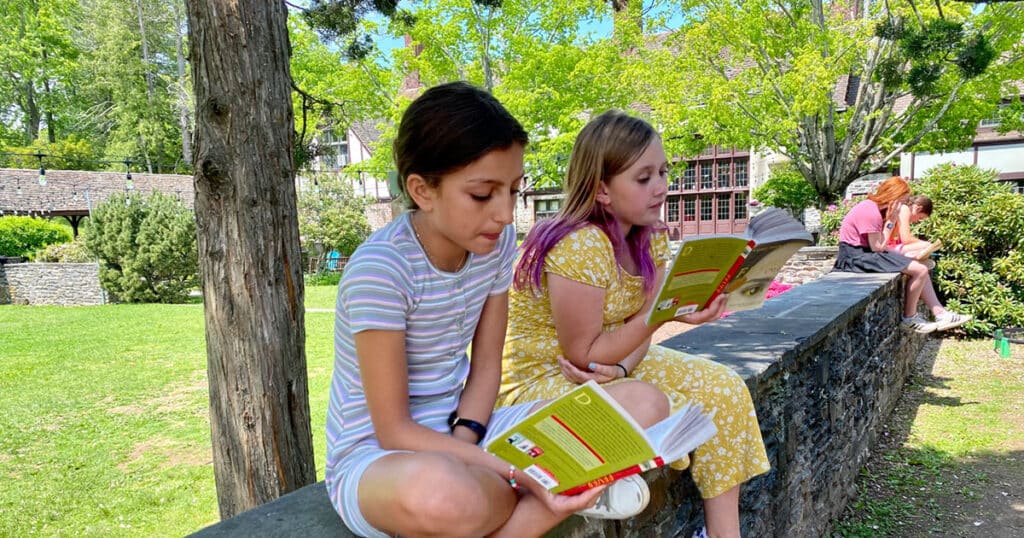Pleasure Reading

The skills and experiences students gain from reading – from improving literacy to expanding their imaginations – are invaluable. Bernice E. Cullinan, Professor Emeritus at New York University, notes, “The amount of free reading done outside of school has consistently been found to relate to growth in vocabulary, reading comprehension, verbal fluency, and general information.” Unfortunately, children’s busy schedules and screen usage have significantly reduced daily pleasure reading. According to Common Sense Media:

- Half of all children under eight own a tablet device and spend an average of about 2.25 hours a day on digital screens.
- 8- to 12-year-olds spend an average of almost five hours a day looking at screens on smartphones, tablets, gaming consoles, and TVs.
- Teens aged 13 to 17 spend about 7 hours and 22 minutes per day on screen time.
Additionally, the National Assessment of Educational Progress (NAEP) found that just 14 percent of students in grades three through eight say they read for fun every day. Their report notes a decrease of three percentage points since 2020 and 13 percentage points since 2012.
How Can We Encourage Free Reading?

So… that’s where parents and teachers come in! The magic of reading begins with exposure to great stories. It is imperative that we model, encourage, and support our children so they become “pleasure readers.” The International Literacy Association (ILA) defines pleasure reading as “the opportunity to read freely, voluntarily, and with delight.” For some children, whether they have a reading difference or simply haven’t experienced a sense of pleasure from reading, our modeling, encouragement, and support need to be ongoing.
Families might consider doing the following to support pleasure reading at home:
- minimize screen time
- go on a “bookstore” date
- look for books that reflect your child’s interests
- look for a series—it is fun to track the same characters in book after book
- ask your child to tell you about their books and tell them about yours
- encourage your child to visualize characters and events (making movies in their mind) and tell you about it
- take regular trips to your local library
- listen to audiobooks in the car
- support any interest in graphic novels
- set a routine and consistent “family” pleasure reading time each day where everyone is in the same room reading silently
Frank Serafini, a well-known Professor of Literacy Education once said, “There is no such thing as a child who hates to read; there are only children who have not found the right book.” Help your child find the right book and develop a love of reading for fun.

